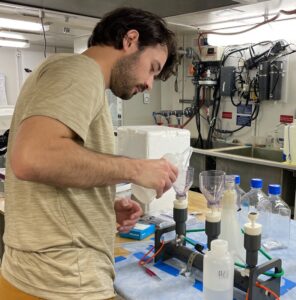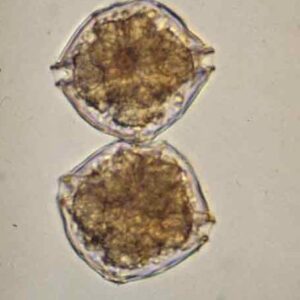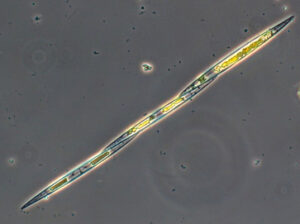Thursday, June 01, 2023 – North Pacific Ocean (Latitude: 42.50.802 N, Longitude: 124.40.196 W)
The Culprits behind Harmful Algal Blooms

Toxins are another threat to the phytoplankton bloom and are very prevalent in the ocean. Will McClure (Schnetzer Lab, NC State University) is investigating toxins found in seawater, specifically domoic acid and saxitoxin. Both of these chemical compounds are neurotoxins that attack the nervous system. “Domoic acid is known to cause amnesic shellfish poisoning and saxitoxin paralytic shellfish poisoning in humans who eat contaminated foods like fish or shellfish,” Will stated.
Part of Will’s research focuses on investigating the conditions that support these particular phytoplankton to take over during blooms (like the one we are currently following) and when they start producing their toxins.


Saxitoxins are produced by a dinoflagellate, known as Alexandrium (left) and domoic acid by the diatom Pseudo-nitzschia (right).*
According to the Schnetzer Lab, alerts and closures for shellfish harvest have become a nearly annual consequence of these harmful algal blooms along the West Coast. More recently, both toxins have also been documented in mammals as far north as the Arctic. “We hope to learn more about the conditions that favor these algae, how they impact ecosystems and food webs and, ultimately, how we can predict conditions that may pose a threat to human consumption of seafood.”
*Image Source-Left: Anderson, Don. Harmful Algae: Alexandrium. U.S. National Office for Harmful Algal Blooms. WHOI. Boston, MA. https://hab.whoi.edu/species/species-by-name/alexandrium/.
*Image Source-Right: Kudela Lab: Ocean Data Center. Phytoplankton Identification: Diatoms and Dinoflagellates. CeNCOOS and HABMAP. University of California – Santa Cruz. http://oceandatacenter.ucsc.edu/PhytoGallery/dinos vs diatoms.html.
